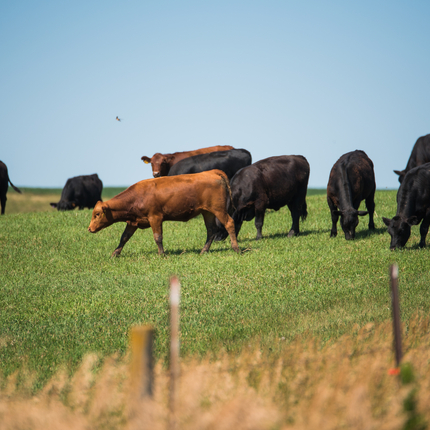Published in the Norfolk Daily News on May 9, 2020
From major weather events to trade wars, our country’s farmers and ranchers are no strangers to adversity.
Today, like many others in the world, farmers and ranchers are facing a time of uncertainty as a result of the coronavirus global pandemic.
Still reeling from the impacts of several years of low commodity prices, the coronavirus pandemic is now impacting agriculture on all sides and in all sizes of operation. Sobering reports keep rolling in. Commodity and beef prices dropping. Milk and produce dumped. Ethanol plants slowing and stopping production, schools and restaurants canceling food purchases. Meat processing workers - overwhelmingly immigrants of color - falling sick from inadequate safety guidance and measures. Packing plants closing; livestock producers suddenly stuck with nowhere to send their animals, and some facing the choice of not if, but when, to euthanize animals.
Farmers and ranchers are familiar with hardship, and not all have been thrown into crisis while these disruptions in the supply chain unfold. But there is no escaping the fact that if farmers and ranchers are to make it through this time, support from policymakers will be needed. The CARES Act was an important first step in this direction. It included various provisions aimed at supporting farmers and ranchers, although how that support makes it from the halls of Congress to farmers’ pockets is still unfolding. Not only did the CARES Act provide billions for the U.S. Department of Agriculture to offer farmers and ranchers relief, it also included several provisions for farmers and ranchers to access small business support.
The USDA recently revealed the first few details of a relief plan for farmers as part of the new Coronavirus Food Assistance Program (CFAP). They plan to provide $16 billion in direct payments for farmers and ranchers and $3 billion for food purchases. The USDA has released almost no other information about the application process for the direct payments. However, Sen.Hoeven of North Dakota stated in a press release that producers would be compensated for 85 percent of price loss from Jan. 1 to April 15, and for 30 percent of price losses in the coming two quarters.
Producers of all sizes will experience deep impact from this crisis. As the USDA rolls out their aid program for farmers, we urge them to not further exacerbate the consolidation that has characterized our farm landscape and agricultural economy for decades. We urge the USDA to put in place safeguards with their farm aid program to ensure that producers of all sizes are able to access the assistance they need in this time.
Farm country has also been closely watching new supports from the Small Business Administration. The CARES Act created the Paycheck Protection Program, which offers loans to businesses to cover payroll and other expenses. However, farmers are also eligible; for those without employees, SBA released special guidance for sole proprietorships to apply to PPP. While funding for PPP quickly ran out, Congress replenished its fund - but it is also likely to run out quickly.
In addition, the most recent stimulus package made it so that farms could apply for another SBA program, the Economic Injury Disaster Loan program, which could offer additional support. Applications opened for farmers on May 4. Farmers can learn how to apply at sba.gov.
We urge SBA to enforce and maintain protections to allow small and midsize farms real access to these programs. Otherwise, they offer support in name only.





